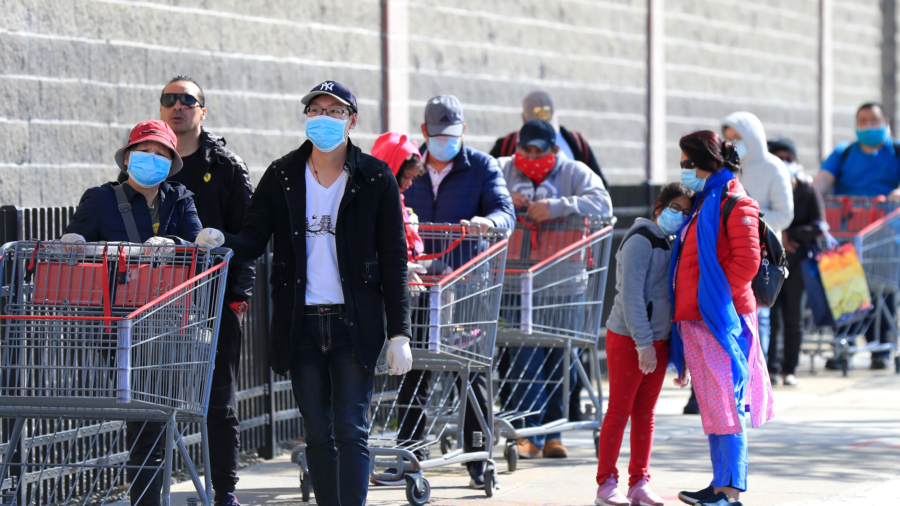The CCP virus outbreak has plunged the U.S. economy into its most severe quarterly contraction since the Great Recession, with the Commerce Department on Wednesday announcing that first-quarter output fell by 4.8 percent.
The Department’s seasonally adjusted, annualized quarter-on-quarter GDP number, typically abbreviated to SAAR QoQ, is an advance estimate and is subject to revision.
The dismal GDP number for the January-to-March period of 2020 comes after the economy grew at a 2.1 percent rate in the last three months of 2019. Most of the key components of U.S. economic output—including consumer spending, which accounts for two-thirds of economic activity—fell sharply amid widespread business shutdowns aimed to stem the spread of the virus.
“The economy is in free fall, we could be approaching something much worse than a deep recession,” said Sung Won Sohn, a business economics professor at Loyola Marymount University in Los Angeles. “It’s premature to talk about a recovery at this moment, we are going to be seeing a lot of bankruptcies for small and medium-sized businesses.”

The Commerce Department partly blamed the pandemic for the dramatic plunge in output.
“The decline in first quarter GDP was, in part, due to the response to the spread of COVID-19, as governments issued ‘stay-at-home’ orders in March,” the agency said in a note. “This led to rapid changes in demand, as businesses and schools switched to remote work or canceled operations, and consumers canceled, restricted, or redirected their spending.”
The agency noted that the first-quarter GDP number does not fully reflect the full economic impact of the pandemic because the agency’s calculation methods and sources didn’t completely capture the changes in economic activity that took place at the end of the quarter.

While the 4.8 percent contraction in first-quarter GDP is the steepest since 2009, it is the year’s second-quarter output that is expected to bear the brunt of the outbreak-driven economic fallout.
White House economic adviser Kevin Hassett said on Monday the U.S. economy could experience its biggest slump since the Great Depression, predicting a second-quarter contraction in output of up to 30 percent.
“You’re looking at something like minus 20 percent to minus 30 percent in the second quarter,” Hasset said on CNBC’s “Squawk Box.”
“For second-quarter GDP, it’s going to be the biggest negative number that we’ve seen since the Great Depression,” he added.
Unemployment has surged in the country, with more than 26 million jobs lost in the past five weeks alone, driven by the lockdowns imposed to mitigate the outbreak of the CCP (Chinese Communist Party) virus, the novel coronavirus that emerged from China in 2019.
Hasset told CNN on Tuesday that he believes unemployment could reach between 16 percent and 20 percent in the second quarter.
Treasury Secretary Steven Mnuchin on Tuesday predicted the economy could rebound by late summer as states ease lockdowns and let businesses reopen.
“As states start opening up, I think you’re going to see a lot of demand come back,” Mnuchin told Fox Business Network. “Now again, the states are going to open up slowly, so you’re going to see June and July pick up, but I think by August and September, you’re going to see a big bounce back from what has been a very rocky period.”

The government has delivered four emergency relief packages, worth some $3 trillion, to prop up the economy amid the outbreak, and talks are in progress on a fifth.
The Federal Reserve has slashed interest rates to near zero and re-deployed the broad extent of its crisis-era toolkit to prevent a financial meltdown and give the economy its best chance for a dynamic rebound once the pandemic subsides.
Trump, at a White House event on Tuesday, said he expects the fourth quarter “to be really strong and I think next year is going to be a tremendous year.”
“The third quarter is a transition quarter. The second quarter is what it is,” Trump added.
Reuters contributed to this report.
From The Epoch Times

